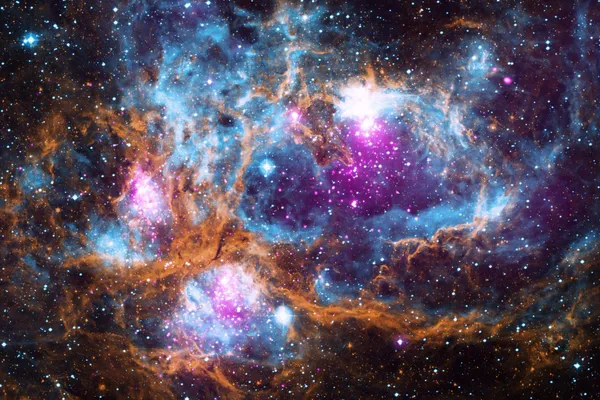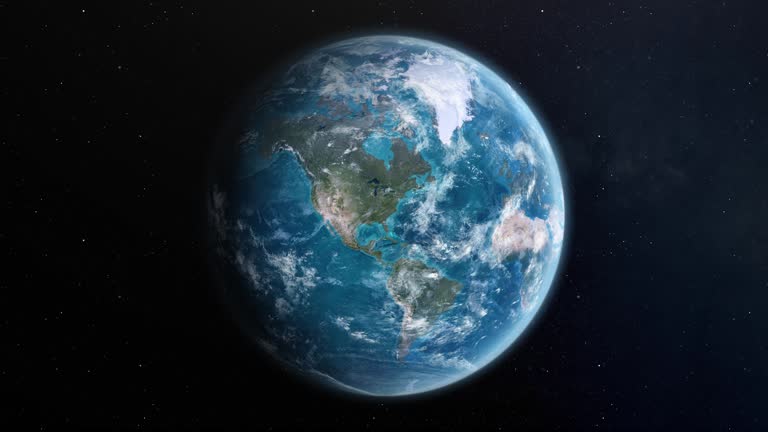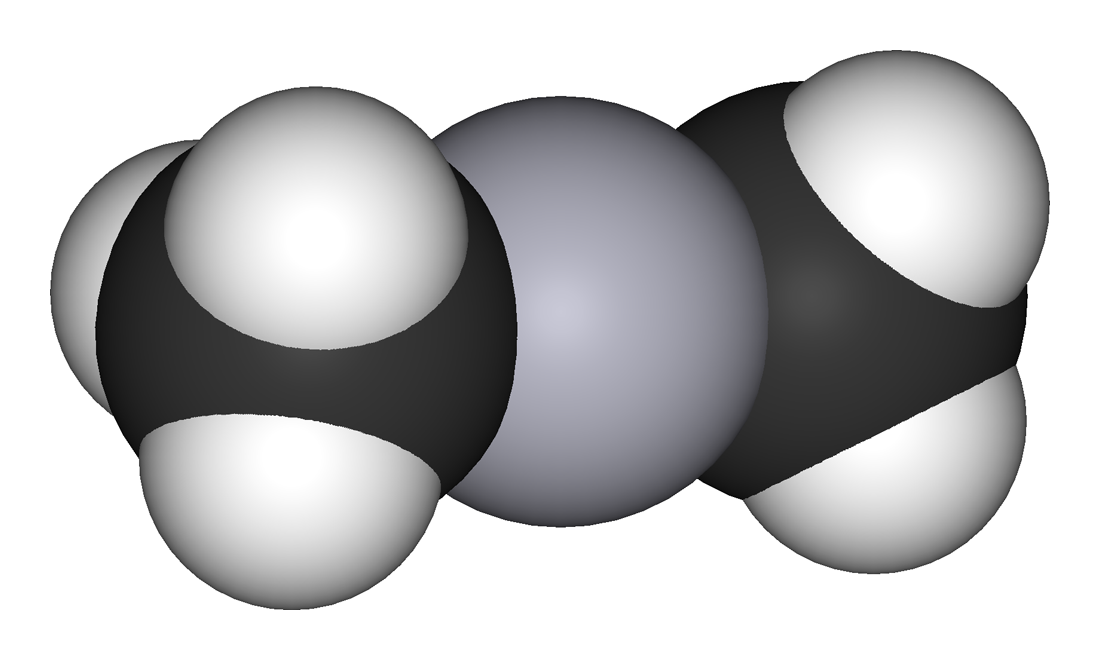When you look around, reality feels solid and familiar. There is up and down, left and right, forward and backward—three directions that define the space we move through. Then there is time, always flowing, pulling us relentlessly from the past into the future. Together these four dimensions—three of space and one of time—form the fabric of what we call the universe.
Albert Einstein’s theory of relativity gave us this four-dimensional picture in a new and astonishing way. Instead of treating space and time as separate, he revealed that they are interwoven into a single entity: space-time. Gravity itself is not a force pulling on us invisibly, but rather the bending and curving of this four-dimensional fabric caused by massive objects like stars and planets. This insight reshaped our understanding of existence.
And yet, a haunting question lingers. What if this four-dimensional world is only the surface of a deeper reality? What if the universe hides more dimensions—hidden realms curled away from our perception, influencing everything we see without ever revealing themselves directly? The possibility is both thrilling and unsettling, for it suggests that we are living inside a reality far richer than our senses can comprehend.
To explore this mystery, we must journey through science’s most daring ideas, from the dreams of ancient philosophers to the dizzying frontiers of modern physics. We must ask whether hidden dimensions exist, how they might shape the universe, and what they could mean for our place in the grand cosmic order.
Echoes of the Infinite: Dimensions in Philosophy and Imagination
Long before modern science, the idea of hidden dimensions haunted human imagination. Ancient philosophers wondered if our senses revealed the whole truth of existence. Plato’s allegory of the cave described humans as prisoners seeing only shadows on the wall, unaware of the greater reality beyond their vision.
In the 19th century, writers and thinkers began to play more explicitly with the notion of extra dimensions. The 1884 novel Flatland by Edwin Abbott told the story of beings who lived in two dimensions. For them, the third dimension was unimaginable—until one character glimpsed it, realizing that reality extended beyond the limits of his perception. This story was meant as a satire of Victorian society, but it also revealed a profound truth: beings confined to fewer dimensions cannot easily imagine higher ones. If we humans live in four dimensions, perhaps we too are blind to realities beyond.
As physics advanced, these philosophical musings began to take on scientific form. Mathematicians like Bernhard Riemann showed that higher-dimensional spaces were not just fantasies but legitimate mathematical structures. His work on curved geometries laid the groundwork for Einstein’s relativity, but it also hinted that dimensions need not be limited to what we experience directly. By the dawn of the 20th century, the stage was set for science to ask the question in earnest: Could hidden dimensions be real?
The Fifth Dimension: A New Door Opens
In 1919, just after Einstein’s theory of general relativity had astonished the world, a German mathematician named Theodor Kaluza proposed an audacious idea. What if Einstein’s equations describing gravity could be expanded into five dimensions instead of four? To everyone’s surprise, when Kaluza performed this calculation, an extra force emerged from the mathematics—one that looked exactly like electromagnetism.
Suddenly, gravity and light seemed to arise naturally from the same higher-dimensional framework. Space-time plus one hidden dimension could unify two of nature’s fundamental forces. Kaluza’s proposal was dazzling.
Later, a Swedish physicist named Oskar Klein refined the idea. He suggested that the fifth dimension was real but curled up so tightly that it was invisible to us, like a tiny circle at every point in space. If you look at a garden hose from far away, it seems like a one-dimensional line. But up close, you see the circular dimension wrapped around it. Klein argued that hidden dimensions might be like this: small, compact, and hidden from our everyday experience.
Although Kaluza-Klein theory could not explain everything, it planted a seed. Perhaps the universe is larger than we think—not in distance, but in dimensions. And perhaps these hidden dimensions are the key to uniting the laws of physics.
Strings and the Symphony of Hidden Dimensions
By the late 20th century, the quest to unify physics had grown desperate. Einstein had dreamed of a unified theory that would reconcile gravity with electromagnetism, but new discoveries made the puzzle even more complex. Physicists now knew that two other forces governed nature: the strong force, binding quarks inside protons and neutrons, and the weak force, responsible for radioactive decay. Together with electromagnetism, these three forces formed the “standard model” of particle physics. But gravity stubbornly resisted unification.
Enter string theory. In the 1970s and 1980s, physicists proposed that the fundamental building blocks of the universe are not point-like particles, but tiny vibrating strings of energy. Just as a violin string can produce different notes depending on how it vibrates, these cosmic strings could produce different particles depending on their vibrational patterns.
But there was a catch. For the mathematics of string theory to work, the universe needed more than four dimensions. The earliest versions required ten dimensions—nine of space and one of time. Later refinements, called M-theory, suggested there might be eleven. In these higher-dimensional frameworks, the hidden dimensions are curled up in intricate shapes called Calabi-Yau manifolds, so small and complex that we cannot see them directly.
What sounds like science fiction was driven by rigorous mathematics. The hidden dimensions gave string theory the flexibility to account for the zoo of particles and forces in the universe. They also opened the door to possibilities far beyond imagination: universes with different laws of physics, entire realities separated from ours by higher-dimensional space.
The Shape of the Hidden World
If hidden dimensions exist, what do they look like? Unlike the familiar directions we move through, these dimensions are thought to be compact and microscopic. Physicists imagine them as tiny, folded spaces at every point in the universe.
Calabi-Yau manifolds are one candidate. These are six-dimensional shapes with extraordinary geometric properties, curled up so intricately that they could hide within the tiniest spaces. To us, they would be invisible, but particles and forces might sense their presence. In fact, the very differences between the particles we see—their masses, charges, and interactions—might be determined by the shape of these hidden dimensions.
It is a humbling thought. The universe we know, with its galaxies and stars and planets, might be a mere shadow cast by the curled-up geometry of invisible dimensions. What appears vast and endless could be shaped by something infinitesimally small.
Can We Detect Hidden Dimensions?
The challenge of hidden dimensions is that, by definition, they are concealed from ordinary perception. Yet science demands evidence. How could we ever know if they exist?
One avenue comes from high-energy physics. If the hidden dimensions are real, particles at extremely high energies might interact with them. Experiments at particle accelerators, such as the Large Hadron Collider near Geneva, smash protons together at near-light speeds. Physicists hope that in these collisions, some energy might “leak” into hidden dimensions, producing telltale signs like missing energy or unexpected particle behavior.
Another possibility lies in gravity. Unlike the other forces, gravity is extraordinarily weak—billions of times weaker than electromagnetism. Some physicists propose that this weakness could be explained if gravity spreads into hidden dimensions, diluting its strength in our four-dimensional world. If so, tiny deviations from Newton’s law of gravity might be detectable at very short distances. Experiments with delicate instruments are testing this possibility, probing for signs that gravity behaves differently at microscopic scales.
Cosmology also offers hints. The early universe, moments after the Big Bang, was a place of extreme energy where hidden dimensions might have played an important role. Patterns in the cosmic microwave background—the afterglow of the Big Bang—could contain subtle imprints of higher-dimensional physics. The large-scale structure of galaxies might also bear clues. For now, no conclusive evidence has appeared, but the search continues with relentless determination.
Parallel Realities and the Multiverse
The idea of hidden dimensions has fueled one of the most audacious concepts in modern science: the multiverse. If extra dimensions exist, then the laws of physics we know might not be unique. Different regions of higher-dimensional space could produce different configurations, leading to universes with entirely different properties.
In some scenarios, our universe is like a three-dimensional “brane” floating in a higher-dimensional “bulk.” Other branes might exist parallel to ours, each with its own universe. Occasionally, these branes could even collide, triggering events like a Big Bang.
Though speculative, these ideas have captivated both scientists and the public. They raise profound questions. Is our universe just one among countless others? Could other versions of ourselves exist in parallel worlds, separated not by distance but by dimensions we cannot see? While evidence is elusive, the notion expands our imagination, reminding us of the vastness of what may lie beyond our comprehension.
Dimensions and the Human Imagination
Hidden dimensions are not merely a technical detail of physics; they are a challenge to human imagination. Our senses evolved to navigate a three-dimensional world, to hunt and gather, to build shelters and tools. We are not naturally equipped to perceive higher dimensions. Yet through mathematics, thought experiments, and creative vision, we stretch beyond our biological limits.
Artists, writers, and philosophers have embraced the theme of hidden dimensions as a metaphor for the unseen layers of reality. They suggest that just as science may reveal dimensions beyond our senses, so too might human experience be deeper than what appears on the surface. To think of hidden dimensions is to confront the mystery of existence itself.
The Future of the Hidden
What lies ahead in the search for hidden dimensions? Advances in particle physics, cosmology, and quantum gravity may one day provide answers. Perhaps new experiments will reveal tiny deviations in gravity’s behavior, or collisions at higher energies will offer glimpses of other dimensions. Perhaps mathematical breakthroughs will uncover a deeper theory that explains why dimensions exist at all.
Even if hidden dimensions remain unproven, the pursuit itself reshapes science. It pushes us to unify the forces of nature, to connect the very small with the very large, and to imagine realities far beyond ordinary experience. Whether or not extra dimensions are ever detected, they have already expanded our vision of what the universe might be.
The Emotional Landscape of Hidden Worlds
There is something deeply human about longing for hidden dimensions. It reflects our desire to believe that what we see is not all there is—that behind the surface of life lies a deeper truth, a grander design. To imagine dimensions beyond our grasp is to admit both our limits and our yearning to transcend them.
When we gaze at the night sky, we see a universe vast and beautiful, yet we also sense mystery. Hidden dimensions are the scientific form of that mystery, a reminder that the cosmos may hold far more than we can ever touch. Whether they are real or not, they inspire us to keep searching, to keep questioning, to keep dreaming.
Conclusion: A Universe Larger Than Imagination
The question of hidden dimensions cuts to the heart of science and philosophy alike. We live in a four-dimensional world, but mathematics, physics, and imagination suggest that this may not be the whole story. From Kaluza and Klein’s bold proposals to the intricate geometries of string theory, from the laboratories of particle physics to the vast reaches of cosmology, the hunt for hidden dimensions continues.
If they exist, they could explain the mysteries of gravity, unify the laws of physics, and even open the door to parallel universes. If they do not, then the very attempt to find them will still have deepened our understanding of the cosmos.
In either case, hidden dimensions embody the spirit of science itself: the refusal to accept the obvious, the courage to ask what lies beyond, and the faith that the universe is richer than we can imagine. They whisper to us, like the compass needle that fascinated a young Albert Einstein, that unseen forces shape our world. And they remind us that reality, no matter how much we learn, may always have more layers waiting to be revealed.






